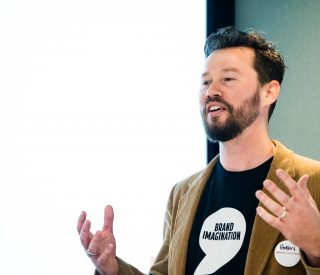Associate Professor Jake Lynch, director of the Centre for Peace and Conflict Studies at the University of Sydney has written the following fantastic piece, published in the Sydney Morning Herald, about America being in a constant state of war:
How America is constantly at war
JAKE LYNCH
June 26, 2009
Early this year was a turning point in America’s relations with the rest of the world, and not just because Team Obama took over. What tells us more about the underlying dynamics of global conflict is that the US switched, at some point following the inauguration, from being a country usually at peace to one usually at war.
The modern era of American war fighting started with what President Franklin Roosevelt called the “date of infamy”: Japan’s attack on Pearl Harbour in 1941, which brought GIs into World War II. To this point, 811 months have passed, and the US has now spent 406 of those at war. That doesn’t count the innumerable logistical efforts, starting with the Berlin airlift, clandestine operations and proxy wars – even the odd peacekeeping mission.
It is derived from adding the 46 months it took to get Japan to surrender in the Pacific to 37 months of the next episode of all-out combat, in Korea. Identifying the Vietnam starting point is tricky, but the first American military hardware – helicopters – and personnel to fly them arrived in South Vietnam on December 11, 1961.
The formal ceasefire came 134 months later, and for a while the idea of sending Americans to fight overseas fell into disrepute. It was rehabilitated through small-scale deployments like Grenada in 1983 and the invasion of Panama in 1989: two months each.
Then came Desert Storm,where it took three months to eject the forces of Saddam Hussein from Kuwait in 1991.
There followed the ill-starred attempt in Somalia in 1992-93 (10 months) and the bombing of Yugoslavia in the Kosovo conflict of 1999 (another three). The US has been at war in Afghanistan since October 2001, and again in Iraq from March 2003.
American troops are due to withdraw from Iraqi cities this weekend, perhaps marking an end point there, after 76 months, though the country seethes with latent conflicts. Afghanistan now stands at 93 and counting.
Total: 406 out of 811, more than half.
I’ve counted each month in the overlap twice, to reflect the uniqueness of two major wars happening at once. One might ask whether the US actually ever stopped being at war with Iraq, given the constant air patrols over the no-fly zones, the ever-tightening sanctions regime and the occasional intensification of air strikes.
For the US to be at war should not be surprising, but seen as normal: not “man bites dog” but “dog bites man”. In every case, our attention has been directed to particular, external causes, or threats, from South-East Asian nations “falling like dominoes” to communism, to Iraq’s “weapons of mass destruction”.
Instead, we should be looking for general, internal causes. What is it about America that keeps it at war and what intensifies the pressures to war?
A colossal arms industry needs periodic advertising campaigns, on slogans like “shock and awe”, more now because the era of shareholder value means ever greater returns are required, to meet market expectations.
Obama’s first defence budget in early April kept up the previous level of spending. The share price of all the major weapons suppliers turned sharply upwards just beforehand and they’ve been outperforming the stockmarket ever since. Recently, the industry inveigled Congress into an appropriation the military itself doesn’t want, the redundant F-22 fighter.
Then there’s the media. As secretary of state, Colin Powell became America’s chief spokesman for invading Iraq. TV companies waved the flag. His son, Michael Powell, was then the chairman of a Federal Communications Commission planning to deregulate the industry. NBC, one of the three major TV networks, is majority owned by General Electric, which is a major military supplier and contributor to the Bush presidential campaigns.
A proliferation of on-air experts and commentators from corporate-funded think tanks push military stratagems. The idea for the “troop surge” in Iraq was launched, for instance, by the conservative American Enterprise Institute, with a column in The Washington Post.
Where does that leave us? Australian troops are about to take part in Operation Talisman Sabre, in central Queensland, the biennial joint training exercise geared towards maintaining “interoperability” with their US counterparts. We are rehearsing for the next war, and we should think long and hard about whether we really want to.
Obama has spoken about the need for America to regain its leadership as an innovator of civilian technological applications. He may re-regulate media. He may cut the Pentagon’s procurement budgets and he may promote inclusive dialogue and negotiation in Afghanistan.
He may prove a peacemaker: but the underlying momentum, in large sections of the US economy, is pulling in the opposite direction.
























